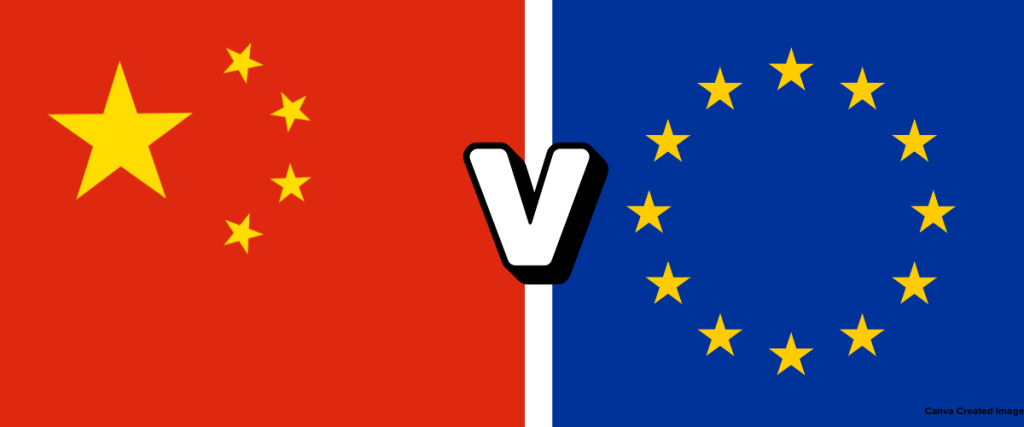The rise of electric cars in the last decade or so has become one of the most significant developments in the global automotive industry, and nowhere is the competition fiercer than between Europe and China. With European brands investing heavily in electrification and Chinese manufacturers accelerating production at remarkable speed, the question is increasingly relevant: can Europe compete with China in the electric cars market? The answer is not straightforward, because the contest involves technology, pricing, consumer preference, and government policy.
China’s Head Start in Electric Cars
China began its push into electric cars earlier than Europe. The government supported the sector with subsidies, research funding, and a long-term industrial strategy. As a result, China now accounts for more than half of global sales. Domestic names such as BYD, NIO, and XPeng are expanding rapidly.
Batteries are a key reason for this success. Most of the world’s lithium-ion batteries are made in China, lowering costs for local manufacturers. That advantage helps Chinese brands sell electric cars at prices European rivals often cannot match.
Europe’s Response to the Electric Cars Challenge
European automakers have not been idle. Germany, France, and Scandinavia all house firms pouring billions into research and development. Volkswagen, BMW, Renault, and Volvo are working on new electric cars platforms. Mercedes has committed to electrification through its EQ range, which includes the EQS saloon and EQB SUV. These models highlight European strengths in luxury, performance, and design.
Europe’s progress, however, has been more fragmented than China’s. The EU has set ambitious emissions targets, but individual nations have their own rules and incentives. This lack of unity slows the transition compared with China’s national strategy.
The Rise of Chinese Brands in Europe
One of the more striking stories in recent years is the revival of MG. Once a classic British brand, MG is now Chinese-owned. MG electric cars such as the MG4 and MG ZS EV are winning over buyers. They offer strong value and practicality, making them popular in cost-conscious markets.
The success of MG shows how Chinese brands can win European trust. Competitive prices put pressure on European automakers. Unless established firms cut costs or add unique features, they risk losing ground in the mass market.
European Strengths: Luxury, Heritage, and Engineering
Europe still holds major advantages. Decades of engineering skill, brand heritage, and design excellence attract buyers who want more than affordability. Cars in the Mercedes EQ range, along with Audi e-tron models and the Porsche Taycan, show what Europe does best. These vehicles mix prestige with cutting-edge technology.
European automakers also benefit from reputations built on safety and quality. In markets where new entrants face scepticism, this reliability matters. Chinese cars are improving, but many buyers still see European models as more dependable.
Infrastructure and Consumer Behaviour in Europe
Charging networks also shape competition. Europe has made strong progress, especially in Norway, Germany, and the Netherlands. Yet charging convenience still varies from one country to another. China, by contrast, has created a vast, well-organised network to support rapid adoption.
European consumers also show diverse preferences. Some want compact city cars. Others demand long range for cross-border travel. European firms must cover all segments, from affordable hatchbacks to high-end SUVs, to stay competitive.
Pricing Pressure and the Mid-Market Dilemma
The fiercest fight is in the middle of the market. Premium cars, like those in the Mercedes EQ range, compete well thanks to technology and brand strength. Affordable MG electric cars appeal to buyers on a budget. But the mid-range is tougher.
Here European cars risk being too costly compared with Chinese rivals. Without the cachet of luxury brands, many mid-market models struggle. To fix this, European firms need cheaper production. A stronger battery industry within Europe could help. Projects such as the European Battery Alliance aim to reduce dependence on Asia, though building at scale will take time.
Technology and Innovation in Electric Cars
Technology remains central to competition. Chinese firms are making rapid progress in connectivity, autonomous driving, and even battery swapping. Their cars often feature advanced infotainment and smart systems, which appeal to younger buyers.
Europe is no laggard. The Mercedes EQ range includes some of the most sophisticated in-car technology available. Volkswagen’s MEB platform supports scalable innovation across multiple brands. Europe excels in blending driving experience with premium features. The challenge is bringing these innovations into the wider market fast enough.
Can Europe Compete with China?
The contest will not produce one winner. Instead, both regions will dominate in different segments. MG electric cars and other Chinese brands are strong in budget and mid-market categories. European marques like Mercedes, Audi, and BMW will continue to lead in luxury and performance.
For Europe to remain competitive across the full spectrum, closer cooperation is needed. Governments and manufacturers must work together to cut costs, build battery capacity, and expand charging infrastructure. Only then can Europe compete effectively with China’s scale and efficiency.
The Road Ahead for Electric Cars in Europe
The future of electric cars in Europe will depend on innovation, regulation, and consumer choice. Chinese brands are here to stay, and they will shape the market for years to come. European brands cannot rely on history alone. They must combine heritage with agility and offer products at every price point.
MG electric cars demonstrate how Chinese firms can thrive in Europe. The Mercedes EQ range shows Europe’s power in the luxury sector. Together, they reflect a global market full of competition and opportunity. Europe’s challenge is not simply to compete, but to define what competing means in this new era.
*All information correct as of 9 October 2025
Don’t forget to follow us on social media to stay up to date with the latest EV news and special offers:
Facebook: https://www.facebook.com/EVisionEVs/
X: https://twitter.com/EVisionEVs
Instagram: https://www.instagram.com/evisionevs
TikTok: https://www.tiktok.com/@evisionelectricvehicles
LinkedIn: https://www.linkedin.com/company/evision-electric-vehicles/



